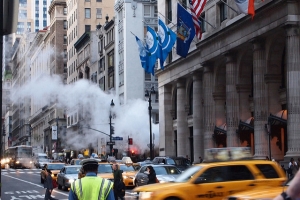Support migrant centric journalism today and donate

The latest figures show that 35,472 Indians working in the US with H-1B visas were issued with US permanent resident visas (better known as green cards) in 2012. This is the highest ever number in a single year and six times higher than the figure for 2011 when only around 6,000 Indian H-1B holders got green cards.
H-1B visas are temporary work visas which can be granted to foreign graduates (or people with skills and experience amounting to 'graduate equivalence') to work in 'a specialty occupation' in the US. Many H-1B holders work in IT.
There is an annual cap of 65,000 on the number of H-1Bs that can be granted to those with Bachelor's degrees. Another 20,000 can be granted each year to students with higher degrees such as Masters' Degrees or PhDs.
H-1Bs last three years
H-1B visa holders can work in the US for three years. They can renew the visa once for a further three years. Because the H-1B visa is a 'dual intent' visa, H-1B visa holders can apply for employment based permanent residence visas (green cards) while their H-1B visa is current.Where an H-1B holder has applied for a green card, he can then apply for further H-1Bs while waiting for his green card application to be determined. If the application is successful, the applicant will be able to extend his H-1B visa yet further while waiting for the green card to be issued).
Those working in the US with H-1B visas apply for a green card under one of five employment based green card categories. US immigration law states that any one country should receive no more than 7% of the total number of green cards in any visa category.
Country quotas
So, for example, Indian applicants should receive no more than 7% of the total allocation of EB-2 green cards for professionals. There is a cap of 41,455 on the number of EB-2s that can be issued each year so Indians should, receive no more than 2,901 EB-2 visas.However, there is an exception to this rule; because very few countries use their entire quota, the cap is often not reached. In most years, there are likely to be more than 2,901 applications from only a handful of countries; India, China, Mexico and the Philippines.
There may be no applications at all from many countries. This may mean that USCIS does not receive 41,455 applications and the cap is not reached.
Reallocation of unused quotas
When this happens, USCIS will distribute the spare visas to citizens of the countries, such as India, which account for more than 7% of the applications. In 2012, Indian applicants benefited from this system, which explains why they received over 35,000 visas in the year.Even so, because of the high numbers of Indians applying for green cards, Indians are still waiting much longer for their visas than applicants from most countries. Indians wait for about 9 years for their EB-2 applications to be decided, compared to six years for applicants from most countries.
Indians wait longer for EB-3s
They also wait for about 11 years for EB-3 (other worker) applications to be decided compared to six years for applicants from most countries.Most Indians issued with green cards in 2012 were issued visas under the EB-2 visa stream. These visas are for professionals with advanced degrees (mainly graduates in the STEM subjects (Science, Technology, Engineering and Mathematics).
If you would like to apply for a US visa, WorkPermit.com can help. WorkPermit.com is a specialist visa consultancy with 25 years of experience dealing with visa applications. We can help with a wide range of visa applications to your country of choice. Please feel free to contact us for further details.





















